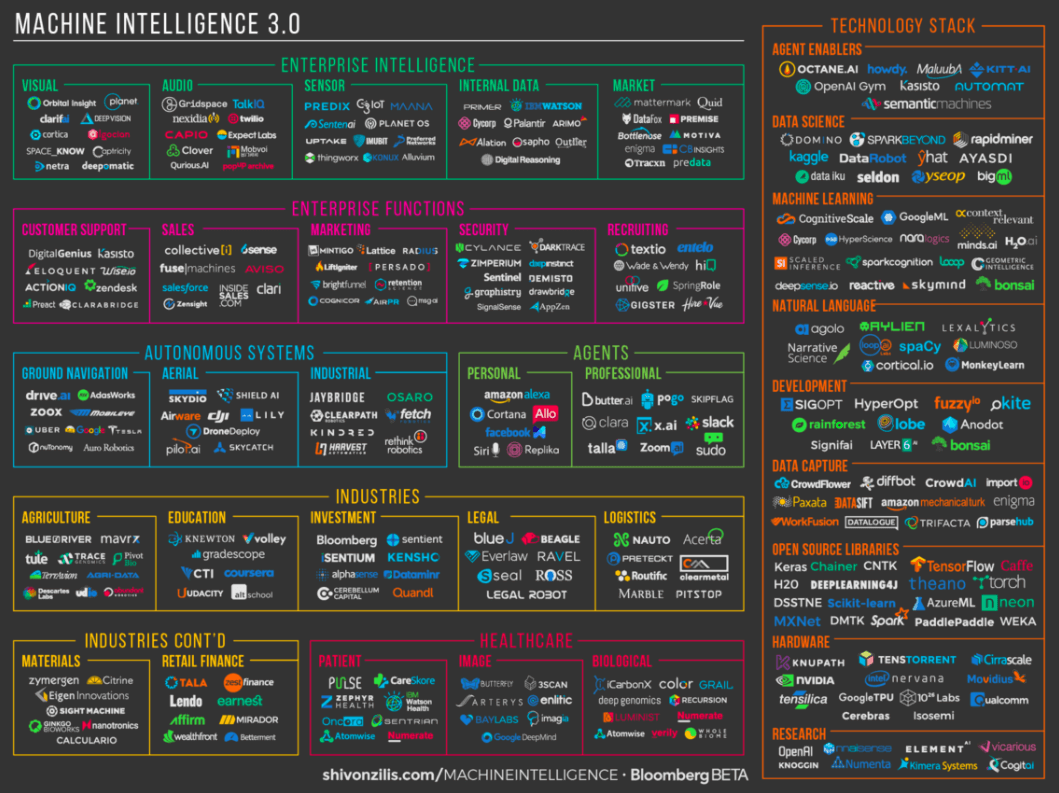It’s the tech buzzword for 2017: artificial intelligence. You don’t need to look far to see the hype, whether it’s an AI chatbot that schedules your meetings, an app that parks your car, or even a bot that orders your coffee, machine learning/AI seems to be revolutionizing every industry.
At work, companies are assessing AI across all departments, including those in recruitment, sales enablement, and marketing automation. However, while AI is being assessed to support sales, customer acquisition, and revenue goals, there’s not enough being done to look at it internally — and how it can benefit the employee.
For example, chatbots are being used in lieu of the IT helpdesk to answer questions from workers. But what if, using machine learning, the system could go one step further, using its knowledge of the common challenges to proactively provide guidance to employees?
Additionally, AI can now be used to automate the recruitment process. But wouldn’t it be great if these same innovations recognized a new employee’s job title and responsibilities, automatically pointing them to the right onboarding systems and processes?
June 5th: The AI Audit in NYC
Join us next week in NYC to engage with top executive leaders, delving into strategies for auditing AI models to ensure fairness, optimal performance, and ethical compliance across diverse organizations. Secure your attendance for this exclusive invite-only event.
Reviewing current tech investments
Many organizations have implemented a number of monolithic systems, such as Salesforce for CRM, Workday for HR and financial management, or SAP for core HR solutions. We’ve come to view such vendors as the leaders in their respective fields, investing significantly in these systems to bring together our employee, sales, and customer data.
The problem is that for the benefits of AI to be truly realized, the data within these systems needs to be accurate and comprehensive. Sure, we expect everyone in the company to enter and update information accurately, but there’s no real gauge to show that the software in question is being maximized to its fullest potential.
For example, it’s quite common for people to bypass how they categorize a new prospect within the CRM system if the software allows you to skip that step, meaning that there are data points omitted with each entry. Likewise, your employees may struggle to complete that performance review not because they are intending to ignore the company-imposed deadline, but simply because they may find the system confusing on where to input their annual goals. Many companies simply don’t have the insight to know whether people are stuck when using the system, or inadvertently miss critical steps in the process.
Measuring success
Based on the years of data a company has about its people, we can now apply a data-driven, machine learning-based approach to inform us about their behaviors. It’s possible to recognize and predict where some of the typical problem spots reside when interacting with any software, then proactively identify ways to walk someone through how to use it.
It’s also important to evaluate how a system is being used over time to understand whether it’s providing a truly intuitive experience. Are the number of helpdesk tickets going down? Is it easy to onboard employees? Is information being completed accurately and on time? The more specific the metrics are, the more successful a technology implementation will be.
From a product standpoint, these insights can help us better design and develop technologies to enhance the user experience, while helping organizations drive up technology adoption. Because let’s face it — while we can evaluate the benefits of using a particular system through factors such as cost and time savings, the biggest measure for success these days is in the extent people are opting to use it.
Looking beyond the hype
While an incredible amount of money is pouring into AI as a category and everyone is jumping on the bandwagon, it’s easy to become enamored by the algorithms themselves rather than the long-term benefits.
Companies cannot afford not to evaluate their existing workforce data and how machine learning/AI tools can be applied to support their goals before expanding this to more far-reaching applications.
Many organizations are looking outwardly at how AI increase sales and boost profits, but the real gains from AI are best placed with an internal assessment. Those companies that can tap into this data to understand people’s preferences and behaviors will ultimately find that this translates into greater time and effort dedicated to addressing the businesses’ goals.
Rephael Sweary is the president of WalkMe, a digital adoption platform.



